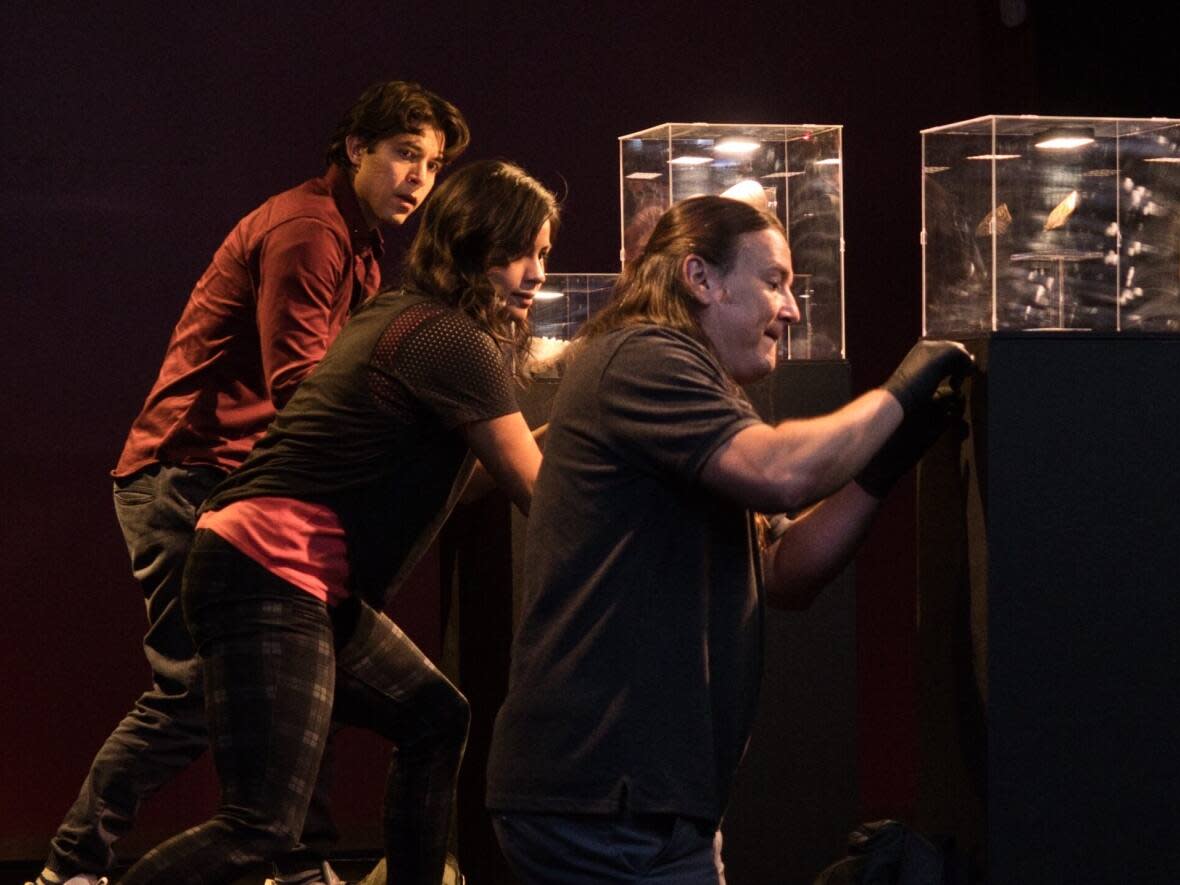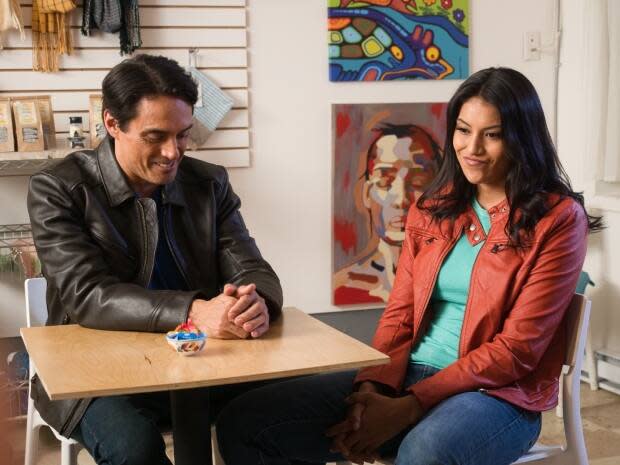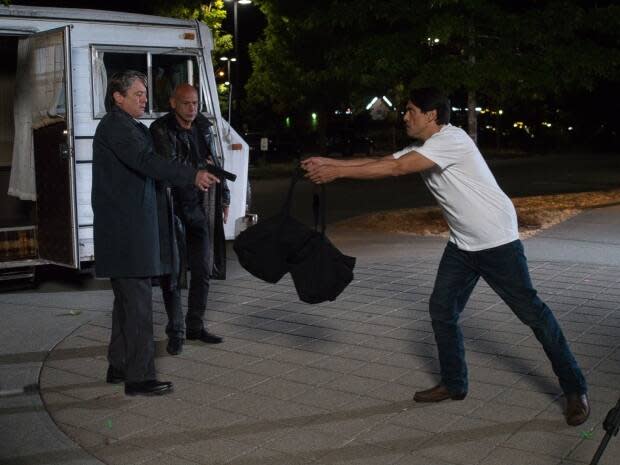New Indigenous heist movie focuses on repatriation of belongings

- Oops!Something went wrong.Please try again later.
- Oops!Something went wrong.Please try again later.
A new kind of heist movie is hitting the big screen this month, starring notable names like Graham Greene, Tricia Helfer and Ashley Callingbull.
It's not cash or jewels the crew is after, but instead sacred artifacts belonging to the fictional Moquohat Nation that a museum plans to ship overseas.
Filmed in Duncan, B.C., on the traditional territory of the Cowichan Tribes, The Great Salish Heist, which has a strong Indigenous cast, is based on archaeological work producer Harold Joe has been involved with for the Cowichan and neighbouring nations, helping repatriate items stolen from First Nations.
He, along with writer Sophie Underwood, came up with the story, while writer, director and star Darrell Dennis gave it that heist movie feel, producer Leslie Bland said.
"People who like … Ocean's 11 — they'll really enjoy this film. It's fun, it's suspenseful, It's got action in it," Bland added.
While the action is to the fore of the film, Bland says, it also tackles the issue of returning items to First Nations that were stolen and put in museums and other colonial collections. Using a comedy-action format helps broaden the audience for important stories, Bland said — viewers are entertained, but also leave with something deeper.

For many years, Indigenous people have fought to have items and ancestral remains returned to their communities after they were taken by settlers.
Article 31 of the United Nations Declaration on the Rights of Indigenous People (UNDRIP) enshrines the right of Indigenous Peoples to control their cultural heritage.
The Native American Graves Protection and Repatriation Act, a U.S. law passed in 1990, requires institutions that receive federal funding to return Indigenous items and human remains to their communities.
In 2021, the B.C. Museums Association called on Canadian institutions to do the same. Since then, exeuctive director Ryan Hunt says there have been more high-profile repatriations, including a Nisga'a pole that was returned from Scotland last fall.
"It's really reassuring that each time we talk broadly with our members about the need to repatriate Indigenous cultural heritage, we have to do less explaining about why it's important," Hunt said.
He said members are continuing to work on repatriation projects, but funding often holds the process up.
'There's no white saviour in this film'
The Great Salish Heist centres on the character of Steve Joe (played by Dennis), an archaeologist who is haunted by the death of a loved one.
The only way lost loved ones can be at rest, according to many First Nations — and the Moquohat Nation in the film — is to have ancestral items returned to their communities. So, Joe begins a journey to bring home sacred items kept at the Royal Western Canadian Museum.
He assembles a team of burglars — the muscle, the disguise expert, the techie and the inside woman — to get inside the museum and replace the artifacts with fakes.

"What's great about this film is you're seeing Indigenous people having agency. There's no white saviour in this film," Bland said. "They take charge of their own issue, their own challenge, and they take action to solve it."
Producer Harold Joe said there are also hidden messages in the film, intended for both an Indigenous and non-Indigenous audience.
"Just watch for it, look for it and listen for it," he said.
A screening of the movie during the Victoria Film Festival earlier this month was sold out, but it is showing at other theatres on Vancouver Island in the coming weeks, including a showing as part of the Indigenous Film Festival in Chemainus in March.

